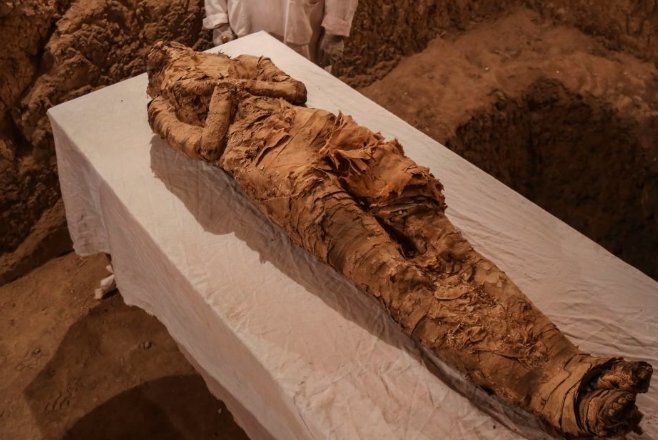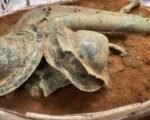In 1935, archaeologists made a startling discovery in Deir el-Bahari near Luxor, Egypt: a mummy with a face frozen in an eternal scream. Dubbed the “Screaming Woman,” this 3,500-year-old mummy has puzzled researchers for decades. Recent studies have shed new light on her death, suggesting she may have died in agony, possibly due to a rare muscular stiffening called cadaveric spasm. This article delves into the latest findings and the ongoing mystery surrounding this ancient Egyptian enigma.
The Discovery and Initial Theories
The Screaming Woman was found during an archaeological expedition led by the Metropolitan Museum of New York. She was discovered in the tomb of Senmut, an 18th Dynasty architect, alongside other family members. The mummy’s haunting expression led to various theories about her death and mummification process. Initially, researchers believed her gaping mouth was due to poor embalming techniques, possibly indicating a rushed or unprofessional job.
However, recent examinations have challenged these early assumptions. Radiologist Sahar Saleem and anthropologist Samia El-Merghani conducted a CT scan of the mummy, revealing that her organs were intact, a sign of high-class mummification. This finding suggests that the embalming process was not rushed or poorly executed, as previously thought. Instead, the open mouth may have been a result of the cadaveric spasm, which occurs at the moment of death due to severe emotional or physical suffering.

The discovery of the Screaming Woman has captivated the scientific community and the public alike. Her unusual posture and expression have sparked numerous debates and studies, each aiming to uncover the truth behind her death. The latest research provides a more nuanced understanding of her final moments, but many questions remain unanswered.
The Role of Cadaveric Spasm
Cadaveric spasm, also known as instantaneous rigor, is a rare phenomenon that can occur at the moment of death. It is characterized by the sudden stiffening of muscles, often in response to extreme stress or trauma. In the case of the Screaming Woman, researchers believe that this condition may have caused her mouth to remain open in a scream, even after death. This theory is supported by the fact that her muscles did not relax before mummification, preventing embalmers from closing her mouth.
The presence of cadaveric spasm in the Screaming Woman’s case suggests that she may have experienced a particularly traumatic or painful death. This condition has been documented in individuals who died by suicide, assault, or drowning, all of which involve significant emotional or physical distress. While the exact cause of her death remains unknown, the evidence points to a violent or agonizing end.
The study of cadaveric spasm in ancient mummies is relatively new, and the Screaming Woman provides a unique opportunity to explore this phenomenon further. By examining her remains, researchers hope to gain insights into the circumstances surrounding her death and the broader implications of cadaveric spasm in ancient Egyptian mummification practices.
High-Class Mummification Techniques
Despite the Screaming Woman’s unsettling appearance, her mummification was of high quality. Researchers found that her body was embalmed with expensive imported ingredients, such as juniper and frankincense. Her natural hair was dyed with henna and juniper, and she was adorned with a black braided wig made of date palm. These details indicate that she was likely a person of high status, receiving a mummification process reserved for the elite.
The intact organs found within her body further support the notion of a high-class mummification. During the period in which she lived, it was common practice to remove the internal organs during embalming. However, the Screaming Woman’s brain, heart, lungs, liver, spleen, kidneys, and intestines were all preserved, suggesting a deliberate and meticulous approach to her mummification.
The use of high-quality materials and techniques in the Screaming Woman’s mummification raises intriguing questions about her identity and social standing. While her name remains unknown, the care taken in her preservation suggests that she held a significant position in society. Further research into her background and the context of her burial may provide additional clues about her life and death.












